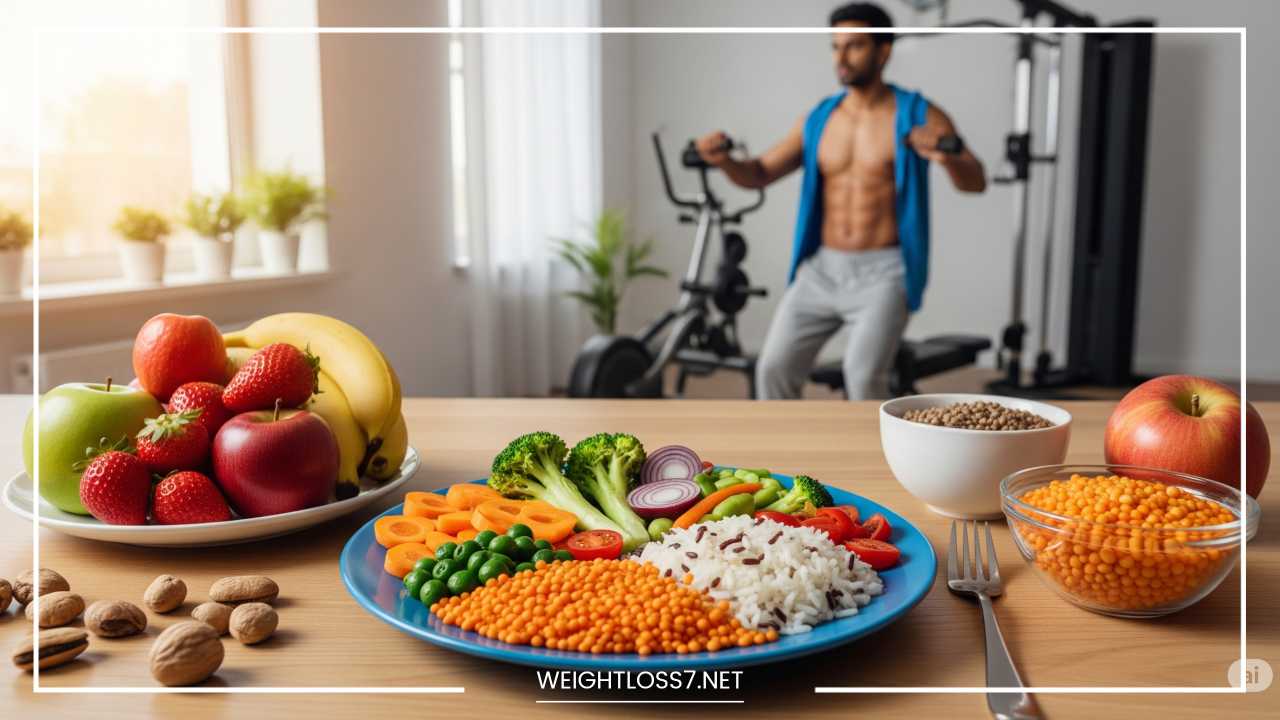What’s the Best Thing for Weight Loss? Expert Picks
What’s the Best Thing for Weight Loss? Expert Picks
Weight loss remains one of the most frequently sought-after health goals globally, and for good reason. Achieving and maintaining a healthy weight can significantly reduce the risk of numerous chronic diseases, improve energy levels, enhance mood, and boost overall quality of life. However, navigating the vast landscape of weight loss advice can be overwhelming, with countless diets, supplements, and exercise programs promising quick fixes. The truth, as illuminated by leading health experts, is that there’s no single “magic solution.” Instead, sustainable weight loss is the result of adopting a holistic approach, rooted in scientific principles and tailored to individual needs.
This article aims to demystify the process by drawing on the collective wisdom of nutritionists, personal trainers, and medical professionals. We’ll explore the fundamental mechanisms of weight loss, delve into the most effective eating habits and physical activities, shed light on often-overlooked factors like sleep and stress, and discuss the critical importance of building sustainable habits. By the end, you’ll have a clear understanding of the best practices backed by experts, empowering you to embark on a truly effective and lasting weight loss journey.
The Role of Calorie Deficit & Energy Balance
At its core, weight loss boils down to a fundamental principle of physics: energy balance. To lose weight, you must consistently burn more calories than you consume. This state is known as a calorie deficit. When your body doesn’t receive enough energy from the food you eat, it taps into its stored energy reserves, primarily fat, leading to a reduction in body mass.
Creating a calorie deficit isn’t about drastic deprivation; it’s about making conscious choices that lead to a sustainable energy imbalance. A common guideline is to aim for a deficit of 500-750 calories per day to achieve a healthy weight loss of 1-1.5 pounds per week. This can be achieved through a combination of reduced caloric intake and increased physical activity.
It’s crucial to approach a calorie deficit safely and avoid extreme restrictions. Fad diets that promise rapid weight loss often involve severely limiting entire food groups or drastically cutting calories, which can lead to nutrient deficiencies, muscle loss, a slowed metabolism, and an increased likelihood of regaining the weight once the diet ends. Sustainability is paramount. A gradual and consistent calorie deficit, achieved through balanced eating and regular activity, allows your body to adapt without triggering harmful metabolic responses. This approach fosters long-term success rather than short-lived, potentially damaging results. Focusing on nutrient-dense foods that provide satiety can make maintaining a deficit much more manageable, ensuring your body receives the necessary fuel while still promoting fat loss.
Best Eating Habits for Weight Loss
While a calorie deficit is foundational, the quality of your calories and your eating habits are equally vital. Experts universally emphasize a focus on whole, unprocessed foods as the cornerstone of effective weight loss. These foods are rich in nutrients and fiber, promoting satiety and supporting overall health.
Prioritize whole foods such as fruits, vegetables, whole grains, lean proteins, and healthy fats. These foods provide1 essential vitamins, minerals, and2 antioxidants, alongside the macronutrients your body needs. High-fiber foods, found in abundance in vegetables, fruits, legumes, and whole grains, are particularly beneficial. Fiber adds bulk to your meals, helping you feel fuller for longer and reducing the likelihood of overeating. It also aids in digestion and helps regulate blood sugar levels.
Lean proteins, such as tofu, lentils, and Greek yogurt, are crucial for preserving muscle mass during weight loss. Protein has a high thermic effect, meaning your body burns more calories digesting it. It also contributes significantly to satiety, helping to curb cravings. Incorporate a source of lean protein at every meal.
Don’t shy away from healthy fats, found in avocados, nuts, seeds, and olive oil. While calorie-dense, these fats are essential for hormone production, nutrient absorption, and overall well-being. Consumed in moderation, they contribute to satiety and can reduce the desire for unhealthy snacks.
Portion control strategies are key. Even healthy foods can contribute to weight gain if consumed in excessive quantities. Learn to read food labels, use smaller plates, and pay attention to serving sizes. Techniques like the “plate method” (filling half your plate with vegetables, a quarter with lean protein, and a quarter with whole grains) can simplify portioning.
Mindful eating techniques involve paying close attention to your food, eating slowly, savoring each bite, and listening to your body’s hunger and fullness cues. This helps prevent overeating due to distraction or emotional triggers. Put away screens, eat at a table, and take time to appreciate your meal.
Finally, hydration is often underestimated. Water plays a critical role in metabolic processes, nutrient transport, and detoxification. Drinking enough water can also aid in weight loss by increasing satiety, sometimes leading to reduced caloric intake. Aim for at least 8 glasses of water per day, and more if you’re physically active.
Physical Activity: What Really Works
While nutrition lays the groundwork for weight loss, physical activity is its powerful complement, boosting calorie expenditure, preserving muscle mass, and improving overall health. The most effective approach combines different forms of exercise to maximize benefits.
Cardiovascular exercise, also known as aerobic exercise, is excellent for burning calories and improving cardiovascular health. Options like brisk walking, jogging, cycling, swimming, dancing, and high-intensity interval training (HIIT) can significantly contribute to a calorie deficit. HIIT, which involves short bursts of intense activity followed by brief recovery periods, is particularly efficient for calorie burning and can continue to boost metabolism even after the workout is over. Aim for at least 150 minutes of moderate-intensity cardio or 75 minutes of vigorous-intensity cardio per week.
Strength training,3 or resistance training, is absolutely critical for weight loss and body composition. While it may not burn as many calories as cardio during the workout, its long-term benefits are profound. Building muscle mass increases your resting metabolic rate (RMR), meaning your body burns more calories even when you’re at rest. Muscle is metabolically active tissue, requiring more energy to maintain than fat. Resistance training also helps preserve muscle mass during weight loss, preventing the metabolic slowdown often associated with dieting. Incorporate strength training sessions 2-3 times per week, targeting all major muscle groups. This could involve using weights, resistance bands, or even your own body weight.
Beyond structured workouts, Non-Exercise Activity Thermogenesis (NEAT) plays a significant, often overlooked, role in daily calorie expenditure. NEAT encompasses all the calories you burn from activities that aren’t formal exercise, such as walking, standing, fidgeting, taking the stairs, doing housework, or even talking animatedly. Increasing your NEAT throughout the day can add up to a substantial number of extra calories burned, contributing significantly to your overall calorie deficit. Simple strategies include parking further away, taking the stairs instead of the elevator, standing more often at your desk, and incorporating short walking breaks throughout your day. These small movements accumulate and can make a big difference in your energy balance.
Sleep and Stress: The Overlooked Factors
While diet and exercise are widely recognized pillars of weight loss, the roles of sleep and stress are often underestimated, yet they exert a profound influence on your body’s ability to shed excess weight. Neglecting these aspects can sabotage even the most diligent efforts.
Poor sleep significantly disrupts the delicate balance of hormones that regulate hunger and satiety. Specifically, insufficient sleep increases levels of ghrelin, often called the “hunger hormone,” which stimulates appetite. Simultaneously, it decreases levels of leptin, the “satiety hormone,” which signals to your brain that you’re full. This hormonal imbalance can lead to increased cravings, particularly for high-calorie, processed foods, and a greater likelihood of overeating. Furthermore, sleep deprivation can impair glucose metabolism and insulin sensitivity, increasing the risk of fat storage, particularly around the midsection. Expert tips to improve sleep include maintaining a consistent sleep schedule, creating a dark and quiet sleep environment, avoiding screens before bedtime, and limiting caffeine and alcohol intake in the evening.
Stress is another significant contributor to weight gain and difficulty losing weight. When you experience stress, your body releases cortisol, often referred to as the “stress hormone.” Chronically elevated cortisol levels4 can lead to increased appetite, cravings for comfort foods (typically high in sugar and unhealthy fats), and a tendency for the body to store fat, especially visceral fat around the abdomen. Stress can also disrupt digestive processes and reduce motivation for healthy behaviors. Managing stress naturally is crucial for weight loss. Techniques such as mindfulness meditation, yoga, deep breathing exercises, spending time in nature, journaling, and engaging in hobbies can help reduce cortisol levels. Prioritizing self-care and setting realistic expectations for yourself can also significantly mitigate stress. Recognizing the interplay between your mental and physical state is key to a holistic and successful weight loss journey.
Building Sustainable Habits
The true secret to lasting weight loss isn’t finding a quick fix, but rather in the consistent application of healthy habits. Sustainability is the bedrock upon which long-term success is built. Without it, even the most effective diet or exercise plan will ultimately fail.
One powerful strategy for building new habits is habit stacking. This involves attaching a new desired behavior to an existing, established habit. For instance, if you want to increase your water intake, you could stack it with your morning coffee ritual: “After I pour my coffee, I will drink a glass of water.” Or, “After I brush my teeth, I will do 10 squats.” This leverages the automaticity of existing habits to make new ones feel less daunting and more integrated into your daily routine. Starting with small, manageable changes is key. Instead of aiming to overhaul your entire diet overnight, try replacing one sugary drink with water each day, or adding one serving of vegetables to your dinner. These incremental changes are less overwhelming and more likely to stick.
Consistency beats intensity every single time. It’s better to engage in moderate physical activity most days of the week than to have sporadic, intense workout sessions followed by long periods of inactivity. Similarly, consistently making healthy food choices, even if imperfect, will yield far better results than periods of strict dieting followed by binges. Perfection is an unrealistic and often counterproductive goal. Focus on showing up, even on days when motivation is low. Small, consistent efforts compound over time, leading to significant progress.
Tracking progress is important for motivation and accountability, but it’s crucial to do so without obsessing over the scale. The scale can be a useful tool, but it doesn’t tell the whole story. Weight fluctuates daily due to water retention, muscle gain, and other factors. Instead of daily weigh-ins, consider weekly or bi-weekly weigh-ins to see trends. More importantly, track other non-scale victories that reflect improved health and habits. These might include:
- Measurements: Taking body measurements (waist, hips, thighs) can show fat loss even if the scale doesn’t move.
- How your clothes fit: Notice if your clothes feel looser or if you need a smaller size.
- Energy levels: Are you feeling more energetic throughout the day?
- Sleep quality: Is your sleep improving?
- Strength gains: Are you lifting heavier weights or doing more repetitions?
- Endurance: Can you walk further or run longer?
- Mood and mental clarity: Are you feeling more positive and focused?
- Food choices: Are you consistently making healthier food choices?
Celebrating these non-scale victories helps maintain motivation and reinforces the idea that weight loss is about overall well-being, not just a number on a scale.
Expert Picks: What Nutritionists, Trainers & Doctors Recommend
When consolidating advice from various health professionals, a remarkable consensus emerges regarding the most effective strategies for weight loss. While their specific focus areas may differ, the underlying principles are consistent, highlighting the interconnectedness of nutrition, physical activity, and mental well-being.
A registered dietitian will almost always emphasize the importance of fiber and protein at every meal. They understand that these macronutrients are critical for satiety, blood sugar regulation, and preserving lean muscle mass during weight loss. A dietitian might suggest incorporating a handful of berries and a scoop of protein powder into your breakfast, adding lentils to your lunch salad, and ensuring dinner includes a lean protein source like tofu or other plant-based options with plenty of non-starchy vegetables. Their guidance focuses on nutrient density, sustainable portion control, and educating clients on how to make balanced food choices that support their long-term health goals, rather than restrictive dieting.
A certified personal trainer will invariably advocate for a combination of strength training and cardiovascular exercise. They will likely push for strength training 3 times per week, explaining how resistance training builds muscle, which in turn boosts metabolism and improves body composition. They’ll emphasize proper form to prevent injury and progressive overload to ensure continuous muscle growth. For cardiovascular exercise, they might recommend incorporating varied activities like brisk walking for daily NEAT, cycling for longer sessions, and perhaps short, intense bursts of HIIT to maximize calorie burn and improve cardiovascular fitness. Their expertise lies in creating individualized exercise plans that are challenging yet sustainable, helping clients build strength, endurance, and overall fitness.
A psychologist or behavioral therapist specializing in weight management would likely highlight the critical role of behavior change and psychological strategies. They would emphasize the importance of journaling to identify triggers for unhealthy eating patterns (such as stress, boredom, or emotional distress). They might introduce techniques like mindful eating, cognitive restructuring to challenge negative self-talk, and strategies for managing cravings without resorting to unhealthy coping mechanisms. Their focus is on understanding the psychological roots of eating behaviors and developing sustainable mental frameworks that support healthy choices, rather than relying solely on willpower. They understand that emotional well-being is intrinsically linked to weight management.
What becomes evident from these expert perspectives is that there isn’t one single “best thing” for weight loss. Instead, the most effective approach is a multi-faceted strategy that addresses different aspects of health simultaneously. The “best thing” for weight loss may differ from person to person, underscoring that personalization is key. What works for one individual’s lifestyle, preferences, and physiological responses may not be ideal for another. Therefore, seeking guidance from a team of professionals – a dietitian, a trainer, and perhaps a therapist – can provide a truly comprehensive and individualized plan, maximizing the chances of sustainable success. It’s about finding the right combination of practices that fit your unique circumstances and help you build a healthier, more fulfilling life.
Final Thoughts & Takeaways
Achieving sustainable weight loss is not about chasing fleeting trends or magic solutions; it’s about embracing a well-rounded, evidence-based approach that addresses multiple facets of your health. The journey towards a healthier weight is deeply personal, but the core principles remain universal.
To recap, the key strategies discussed for effective weight loss are:
- Understanding Energy Balance: Consistently creating a safe calorie deficit by burning more calories than you consume, focusing on sustainability over extreme restriction.
- Prioritizing Nutrient-Dense Foods: Building your diet around whole foods, high-fiber options, plant-based proteins, and healthy fats, while practicing mindful eating and ensuring adequate hydration.
- Engaging in Consistent Physical Activity: Combining both cardiovascular exercise and strength training to maximize calorie expenditure, boost metabolism, and preserve muscle mass, alongside increasing daily NEAT.
- Managing Sleep and Stress: Recognizing the profound impact of poor sleep and chronic stress on hunger hormones and fat storage, and actively implementing strategies to improve both.
- Building Sustainable Habits: Focusing on small, consistent changes through habit stacking, prioritizing consistency over intensity, and tracking progress through non-scale victories.
Ultimately, the “best thing” for weight loss is a personalized synergy of these expert-backed practices. It’s about making small, sustainable choices every day that accumulate into significant, lasting results. Remember, progress, not perfection, is the goal. Embrace the journey with patience, self-compassion, and a commitment to nurturing your body and mind. Your healthiest weight is not just a destination, but a lifestyle built on consistent, positive habits that will serve you well for years to come.


















